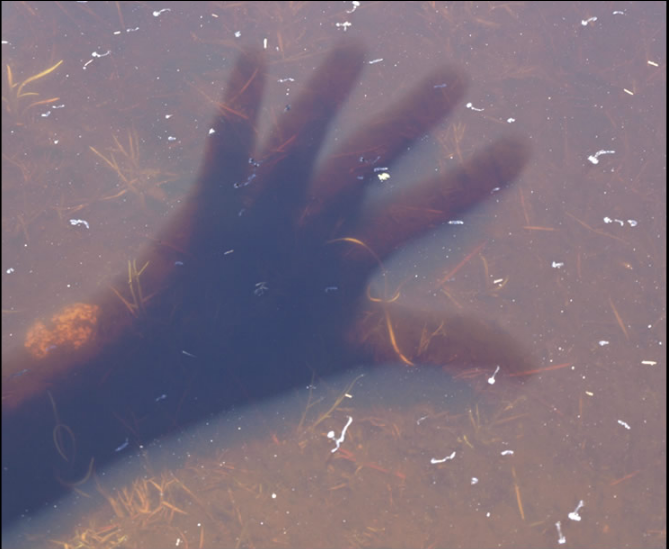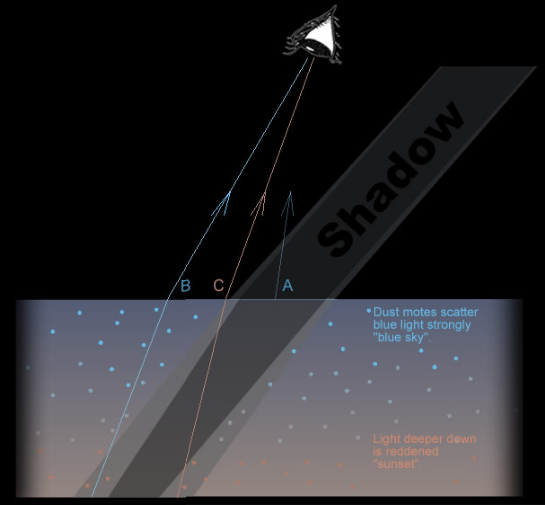Water Shadow Colours
Water Shadow Colours: Unveiling the Mysteries of Turbid Pond Shadows
Have you ever marveled at the captivating colors cast through shallow and slightly turbid pond water? In this article, we will explore the fascinating phenomenon of water shadow colors, delving into the intricacies and factors that contribute to their mesmerizing appearance. Prepare to embark on a journey where purple, rusty red, greyish blue, and yellow hues interplay to create a visual spectacle like no other.
The Dance of Shadows
When observing these enchanting water shadow colors, one might wonder what causes such a mesmerizing display. The key lies in the turbidity of the water itself. Unlike very clear water that would only produce a single shadow on the pond bed, the presence of suspended particles in turbid water gives rise to a more complex interplay of shadows. Here, we can discern three distinct shadows: a two-dimensional shadow on the pond's surface, a three-dimensional solid-volume shadow through the water, and another two-dimensional shadow on the pond bed. These shadows exhibit slight penumbrae, where the sun is not completely obscured, adding to their mystique.
The Reflections and Refractions
To understand the vibrant colors within these shadows, we must examine the interplay between light and water. The pool's surface reflects both direct sunlight and blue skylight, resulting in a blue appearance where the sunlight is shadowed. Additionally, the debris on the surface exhibits varying degrees of brightness and blueness, depending on its location. Bright white patches are found in some areas, while others appear dimmer and bluer.
The Intricacies of Indirect Color Effects
The solid shadow coursing through the water plays a crucial role in producing the indirect color effects we observe. Within the sunlit water, dust motes and debris scatter light, with smaller particles scattering blue light more strongly than red. This scattering phenomenon is akin to the scattering of light by air molecules, which gives rise to the blue hue of the sky. As we venture deeper into the pond, the selective blue scattering causes the remaining transmitted light to appear redder.
The Play of Shadows
Now, let us direct our attention to the specific paths of light within the shadows. Along the ray direction closest to the eye, we find blue scatterers at the upper levels of the pond. These scatterers are seen against the unlit shaft of the shadow, resulting in a blue appearance reminiscent of the vast expanse of the sky. Conversely, when we look at ray direction "C" on the far side of the shadow, most of its upper path remains unlit. Light enters from motes near the pond base, scattering already reddened light, and from the red-illuminated pond base itself. This combination creates a red hue reminiscent of a picturesque sunset landscape and sky.
The Enigmatic Pond Bed Shadow
Finally, let us turn our attention to the two-dimensional shadow cast on the pond bed. Here, darkness is relieved by a mixture of scattered blue and red light. As this shadow is viewed through scattered blue light, equivalent to atmospheric airlight, it takes on a mesmerizing blue-purple appearance. The exact predominance of colors within this shadow is influenced by both the viewing angle and the turbidity of the water.
Unlocking Nature's Secrets
To experience the captivating world of water shadow colors firsthand, why not conduct your own experiment? Take a strong light source and shine it into a bowl of water clouded with just a few drops of milk. Observe how the interplay between light and turbidity gives rise to a mesmerizing display of colors, allowing you to unlock some of nature's most intriguing secrets.
So, next time you encounter water shadow colors cast through shallow and turbid pond water, take a moment to appreciate the complex dance of light, shadows, and particles that brings forth this captivating spectacle. The world of atmospheric optics never fails to amaze, offering us glimpses into the intricate workings of nature's artistic palette.

Water's Coloured Shadows Andrew Kirk captured these shadow colours cast through shallow and slightly turbid pond water.
©Andrew Kirk, shown with permission.
Much is happening. The darkest shadow is purple. Lighter ones at upper left are rusty red while those at lower right are greyish blue. The red shadows are further fringed with yellow at their tops and are purple edged opposite. The pond bed is dimly lit in a reddish light. Surface debris is in some places lit bright white and in others dimmer and bluer.
The key is the turbid water. Very clear water would show only a single shadow on the pond bed. Here there are three shadows: a 2D shadow on the pond surface, a 3D solid-volume shadow through the water and another 2D shadow on the pond bed. All three have a slight penumbrae where the sun is not totally obscured.
The pool surface reflects direct sunlight and blue skylight. The surface looks blue (rays from "A") where direct sunlight is shadowed. The debris there is dimmer and bluer too.
The solid shadow coursing through the water produces indirect colour effects. Dust motes and debris in the sunlit water scatter light. When they are very small, as here, they scatter blue light much more strongly than red. They are exactly analogous to the scattering by air molecules that produces a blue sky. As we get deeper and deeper in the pond the selective blue scattering reddens the remaining transmitted light.
Look along the ray direction "B" on the shadow side nearest to the eye. The blue scatterers at the upper pond levels are seen against the unlit shaft of the shadow. That shadow edge will appear blue - like the blue sky.
Look at ray direction "C" on the shadow's far side. Most of its upper path is unlit. Light comes from motes near the pond base scattering already reddened light and from the red illumed pond base itself. That side of the shadow appears red - Like a sunset landscape and sky.
The pool bed 2D shadow has its darkness relieved by a mixture of scattered blue and red light. It is then seen through scattered blue (equivalent to atmospheric airlight) and appears blue-purple.
Which effects predominate are altered by the viewing angle and the water turbidity.
Experiment with shadow colours and sunsets using a strong light shining into a bowl of water clouded with just a few drops of milk.

Note: this article has been automatically converted from the old site and may not appear as intended. You can find the original article here.
Reference Atmospheric Optics
If you use any of the definitions, information, or data presented on Atmospheric Optics, please copy the link or reference below to properly credit us as the reference source. Thank you!
-
<a href="https://atoptics.co.uk/blog/water-shadow-colours/">Water Shadow Colours</a>
-
"Water Shadow Colours". Atmospheric Optics. Accessed on November 24, 2024. https://atoptics.co.uk/blog/water-shadow-colours/.
-
"Water Shadow Colours". Atmospheric Optics, https://atoptics.co.uk/blog/water-shadow-colours/. Accessed 24 November, 2024
-
Water Shadow Colours. Atmospheric Optics. Retrieved from https://atoptics.co.uk/blog/water-shadow-colours/.